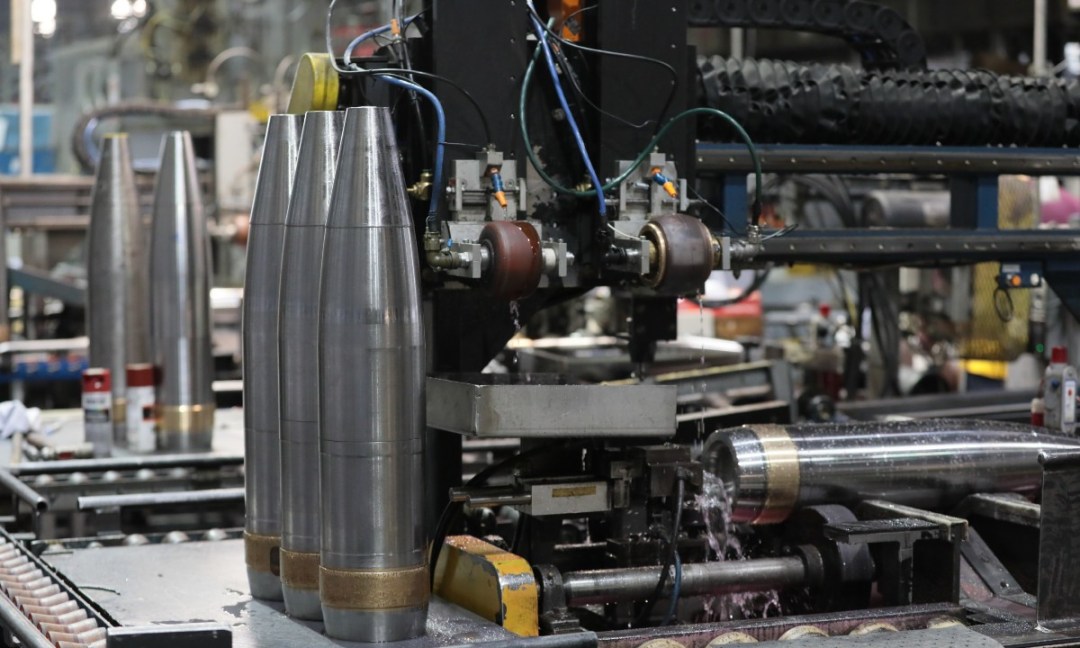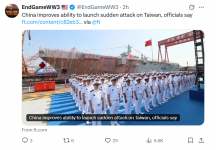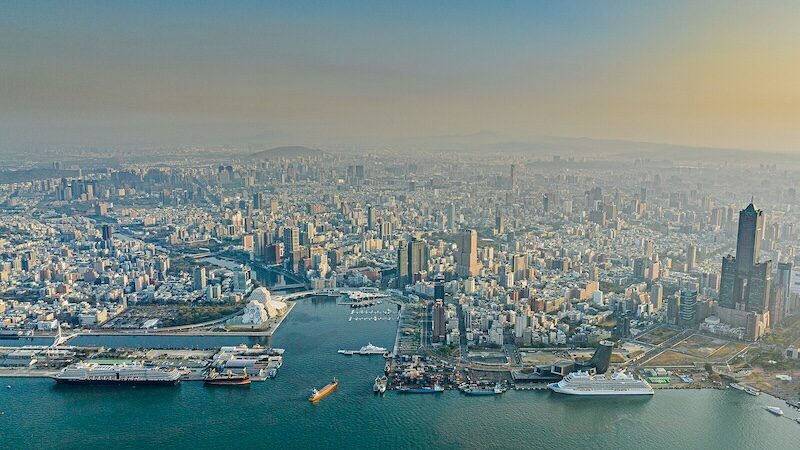Posted for fair use......
On June 1, Ukraine caught Russia off-guard with a bold series of drone strikes against five air bases inside of Russia. Weeks later, Israel initiated its
warontherocks.com
Commentary
Why Recent Surprise Attacks Against Russia and Iran Should Worry Taiwan
Michael A. Hunzeker and Yuster Yu
June 25, 2025
On June 1, Ukraine caught Russia off-guard with a bold series of drone strikes against five air bases inside of Russia. Weeks later, Israel initiated its ongoing air campaign against Iran’s nuclear program with an equally cunning attack on Iranian soil. These dramatic Trojan horse operations, replete with hidden weapons placed deep within their target’s territory, caught the world’s attention. Hopefully, Taipei took notice too. Taiwan must prepare for a range of potential contingencies. From
gray zone incursions to
naval blockades, and from
long range strikes and
offshore island grabs to a
full-scale invasion: Chinese defense planners have options. Taiwan has to be
prepared for all of them. Now, in the wake of two audacious deep strikes by Ukrainian and Israeli forces —
Operation Spider’s Web and
Operation Rising Lion, respectively — Taiwanese leaders will need to contemplate another potential scenario: a decisive first strike from within. And they must do so with a citizenry that
remains ambivalent about the urgency of both the challenge and the need to prepare for war, as well as a patron that is
far away,
spread thin, and just
initiated combat operations halfway around the world.
Breathing New Life into an Old Threat
Surprise attacks from within are nothing new. From the Trojan War to 9/11, adversaries have long sought to win by unexpectedly hitting their target where they least expect it: at home with covertly pre-positioned assets.
And Taiwan has always been vulnerable to
insider attacks. Yet up until now, the expectation was that covert Chinese agents operating in Taiwan would serve as part of a larger campaign and not as a knock-out blow in their own right. After all, other recent attempts to overthrow a regime with the first punch, including the U.S.-led
invasion of Iraq in 2003 and
Russia’s re-invasion of Ukraine in 2022, failed to deliver a quick victory.
That was before Spider’s Web and Rising Lion. These operations suggest that China might have a way to combine old tools — such as spies, fifth columns, and saboteurs — with newer capabilities pre-staged before the fighting starts — like drones and malware — to overwhelm and paralyze the country. Deterrence could falter to the degree Beijing (thinks it) can achieve these goals before Taipei is able to mobilize its defenses or Washington could deploy U.S. forces in decisive numbers.
Will these two operations reshape China’s calculus or its war plans? We have no idea. It is entirely possible that both operations will ultimately prove overhyped rather than a
revolutionary inflection point in warfare. At the same time, it is our well-considered view that Taiwan is uniquely vulnerable to a preemptive strike from within. Therefore, Taipei and Washington should take the risk seriously.
Thankfully, there are ways to mitigate this challenge. There are commonsense measures, including rigorously testing continuity of government operations, especially in a communications-degraded environment. Other options include steps that Taipei ought to be taking anyway. In particular,
accelerating asymmetric defense transformation and creating a
territorial defense force will both offer a meaningful hedge against a surprise attack by making it harder for Beijing to rapidly exploit a successful first strike. Finally, Taiwan should invest in “red teaming” to stress test its leadership and defensive plans against a range of plausible surprise attacks from within. The harsh fact is that Taiwan is at far more risk of being caught off guard than either Russia or Iran, not least because there is no question China has already infiltrated Taiwan.
Learning from Audacity
Ukraine’s daring, multi-axis strike showed that drones can serve as a cheap and effective way to conduct highly precise “long range” strikes (by virtue of having been covertly pre-positioned near Russian bases far from the front) with little to no warning. Perhaps the most notable aspect of the operation was the fact that Ukrainian operatives spent months quietly smuggling drone components into Russia. Ukraine ultimately built 117
first-person view drones, which remained concealed inside wooden boxes on
civilian trucks. Ukrainian operatives, and in some cases
unwitting Russian drivers for hire, parked these ordinary-looking vehicles near their targets. A remote signal caused the containers to spring open and unleash the drones in waves. The operation disabled or destroyed some of Russia’s most valuable strategic aircraft, including Tu‑95 bombers, A‑50 AWACS, and Il‑78 refuelers.
Western estimates place the damage at up to $7 billion, including a third of Russia’s cruise missile-capable fleet.
Less than two weeks later, the Israeli military launched its own, still ongoing, attack. The
Mossad quietly smuggled micro-drones into Iran months before the first fighter jet took off. They hid these drones in suitcases, trucks, and shipping containers near Iranian missile batteries and radar sites, and activated them just hours before the main Israeli strikes were set to begin. These drones helped compromise Iran’s air defenses, opening the door for over 200 Israeli jets, including waves of F‑35s, to launch precision strikes on Islamic Revolutionary Guard Corps commanders, air defense missile and radar crews, and of course nuclear facilities in Natanz and Isfahan.
In the wake of both operations, it seems reasonable to think that Beijing will contemplate whether it too can use cheap, mobile, lethal, and potentially autonomous weapons to mount a surprise attack on strategic targets. Operation Rising Lion in particular demonstrates ways China might creatively weave drones, artificial intelligence, and its longstanding covert preparations into a larger surprise campaign. Indeed, any country now pondering a surprise attack or surviving one cannot afford to ignore these cases.
Why Taiwan is so Vulnerable
The fact is that Chinese proximity, Taiwanese openness, and the deep cultural, linguistic, and economic ties between the two have always made Taiwan susceptible to an attack from within. Four vulnerabilities are especially noteworthy in the context of a surprise attack from within.
Espionage
Taiwan has a well-documented espionage problem. The number of recent high profile cases is striking. Three of
President LaiChing-Te’s military guards were caught selling classified information to China, including sensitive data from Lai’s Wanli security detail. Ho Jen-chieh,
an assistant to the current Secretary General of Taiwan’s National Security Council and former Foreign Minister, Joseph Wu, was detained on charges of spying for China. Taiwanese prosecutors
indicted Kao An-kuo, a retired Army lieutenant general and the convener of the so-called “Republic of China Taiwan Military government,” along with five others for taking money from the Chinese Communist Party to establish an armed organization in Taiwan, plot operations to overthrow the government, and pledge to act as an inside agent in support of an invasion from the mainland. The list goes on. An
active-duty intelligence officer from Taiwan’s ultra-secret signals intelligence Unit — the
Communication Development Office — was caught selling high-level classified information to the Chinese military. A retired
Taiwanese air force officer who served in the Communication Development Office and the Ministry of National Defense’s J-2 (Intelligence) division, helped develop covert networks inside Taiwan. Chinese agents recruited a
retired Military Intelligence Bureau colonel who referred to himself as “Taiwan’s Number 1 Spy.” He went on to turn other retired military officers. Another Taiwanese air force officer stationed at the Songshan Base Command — which services and operates aircraft used by the president and senior military leadership —
leaked classified information. And a former bodyguard to Presidents Chiang Ching-kuo and Lee Teng-hui was
accused of persuading his nephew, army officer Wang Wen-yen — then serving at the Presidential Security Center — to gather classified details about President Tsai Ing-wen’s secret meetings with visiting U.S. and Japanese lawmakers and officials.
There is no question that China has already penetrated Taiwan’s most sensitive institutions — including the presidential office, the Foreign Ministry, the Legislative Yuan, top secret intelligence units, and, of course, the military. Active duty and retired personnel are a particularly alluring target. In 2024 alone, 15 retired military personnel — accounting for 23 percent of all espionage prosecutions — and 28 active duty personnel — accounting for 43 percent of all espionage prosecutions — were indicted on charges of spying for Beijing.
More frightening is the fact that these cases might just be the tip of the iceberg. The number of prosecuted Chinese espionage cases
has doubled over the past two years alone. Former Military Intelligence Bureau Director Liu De-liang estimates that more than
5,000 undercover Chinese agents are currently living in Taiwan. He describes the threat as “beyond imagination.” Particularly worrying is the fact that National Security Bureau Deputy Director Huang Ming-chao
believes that this figure includes approximately 1,300 Chinese nationals who have gone missing after illegally entering Taiwan.
Gangs
Beijing is also actively exploiting Taiwan’s
criminal gangs. Chinese intelligence operatives have long worked to establish and
leverage ties with both national crime networks — including the
Bamboo Union, the
Heavenly Way Alliance, and the
Four Seas Gang — and smaller local groups such as the Niupu Gang in Taipei, the Blood Eagle Gang in Taoyuan, the Sanhuan Gang in Hsinchu, the Taixi Gang in Yunlin, and the Dongmen Gang in Tainan. Chinese intelligence officers have built an extensive, 30,000-word “
Map of Taiwan’s Armed Gang Factions.” This report describes gang influence zones and provides Beijing with a comprehensive breakdown of the major gang factions across Taiwan’s cities and counties, including detailed information on their branches and sub-organizations. It includes extensive intelligence on temple networks, firepower, financial flows, political connections, and even assessments such as “high mobility and aggression,” “uncommitted, needs monitoring,” and “politically unstable.” It outlines proposed bribery budgets and assesses vulnerability to infiltration. The report also shows that Chinese authorities are especially interested in religious sites across Taiwan, including major religious centers such as Dajia Jenn Lann Temple, Beigang Chaotian Temple, and Baishatun Gongtian Temple.
Continued.....







